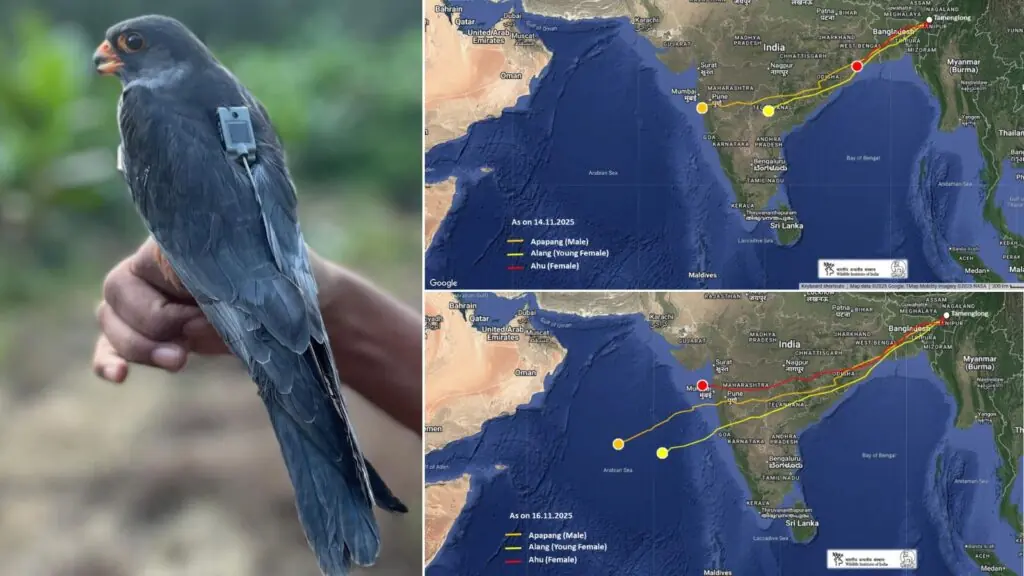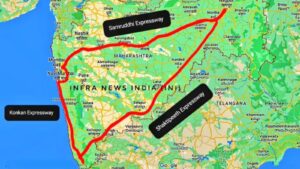Amur Falcons Begin Annual Migration With Daring 3,000 km Arabian Sea Crossing; GPS Tags Track Their Journey as IAS Officer Shares Video

Three GPS-tagged Amur falcons have begun their long annual migration from Manipur to Africa, showcasing one of the most remarkable journeys in the bird world. The tagged birds — Apapang, Alang and Ahu — started their flight soon after being fitted with satellite devices on 11 November 2025 under the Manipur Amur Falcon Tracking Project led by the Wildlife Institute of India.
IAS officer shares rare visuals
IAS officer Supriya Sahu posted updates and a video showing thousands of Amur falcons taking off together. Her posts highlighted the progress of the three tagged birds as they entered one of the toughest parts of their journey. She described the migration as “epic” and praised India’s conservation efforts that have turned these birds into globally recognised travellers.
And the epic journey begins again in all its glory. Three new travellers, Apapang (adult male) orange track, Alang (young female) Yellow track, and Ahu (adult female) Red Track, were satellite-tagged on 11th November 2025 as part of the Manipur Amur Falcon Tracking Project (Phase… pic.twitter.com/07Z6wUvz2Y
— Supriya Sahu IAS (@supriyasahuias) November 14, 2025
Nonstop 3,000 km Arabian Sea crossing
The most demanding stretch of their migration is the Arabian Sea crossing. Apapang has already flown nonstop for 76 hours, covering around 3,100 km at an average of 1,000 km per day, supported by strong easterly tailwinds. All three birds are now heading towards Somalia, which marks a crucial point in their route to southern Africa.
Why northeast India is vital
Every November, Amur falcons travel from Russia, China, Korea and Japan to wintering grounds in Africa. Northeastern India is an essential stopover, especially Manipur and Nagaland, where they feed heavily on termites. Studies by the Wildlife Institute of India show that nearly 85 percent of their diet here consists of termites, helping them build the energy reserves needed for the long oceanic flight.
A decade of conservation success
Until a few years ago, Amur falcons were hunted in parts of Manipur, Nagaland and Assam. Focused conservation work, community involvement and scientific tagging turned the story around. Villages like Chiuluan, once hunting areas, now protect the birds and actively participate in tagging. The region gained global attention when a tagged bird from Chiuluan travelled across the Arabian Sea and continued deep into Africa.
Tracking reveals new insights
GPS tagging offers a detailed look at how these small raptors navigate huge distances. The data from Apapang, Alang and Ahu helps researchers understand flight speeds, stopover behaviour and energy use. It also strengthens the need to protect key stopover points in India, which play a major role in ensuring the success of the species’ annual migration.









